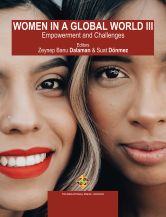The Relationship Between The Girl Child Marriage Problem and Gender Inequality: The Case of Türkiye
The Relationship Between The Girl Child Marriage Problem and Gender Inequality: The Case of Türkiye
Author(s): Ayşe Nur Çiftçi
Subject(s): Politics / Political Sciences, Social Sciences, Psychology, Essay|Book Review |Scientific Life, General Reference Works, Geography, Regional studies, Library and Information Science, Sociology
Published by: Transnational Press London
Keywords: Gender inequality; child marriage; child bride; social policy; social service
Summary/Abstract: Everyone under the age of eighteen is considered a child by the United Nations. This requires those who marry before the age of eighteen to be expressed as a child marriage. Gender refers to gender roles in society, which include the rights and responsibilities that society provides to the individual, according to biological sex. The disadvantage between the genders is predominant in women compared to men. For this reason, when thinking about gender, it is directly perceived gender inequality practices such as the disadvantages of women in the work-life balance, their power reduction against men, their employment in low positions with low wages, and their exposure to the glass-ceiling syndrome. The study aims to assess whether the child marriage problem has the ability to be an important indicator of interregional gender inequalities. For this purpose, the relationship between the rank of gender inequality and the weight of women who had their first marriage under the age of eighteen was analyzed in this study. As a result of that, it can be concluded that the weight of the child marriage is acceptable as an indicator of gender inequality against women.
Book: Women in a Global World, Edition III: Empowerment and Challenges
- Page Range: 71-78
- Page Count: 8
- Publication Year: 2023
- Language: English
- Content File-PDF

